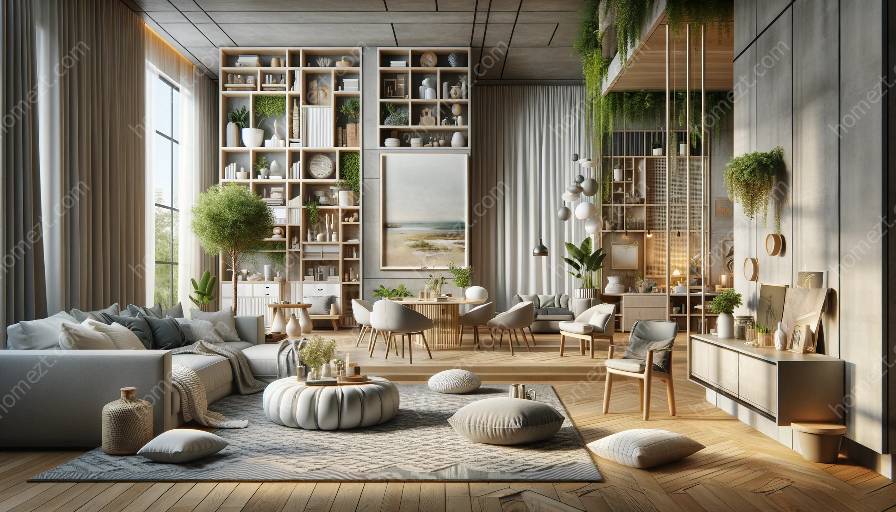When it comes to modern living, the concept of multi-functional spaces in homes has become increasingly popular. As space becomes a premium, homeowners are looking for innovative ways to maximize the utility and visual appeal of their living spaces. This trend has given rise to a new approach in interior design and styling, where space planning and optimization play a crucial role in creating versatile, adaptable, and aesthetically pleasing environments.
Understanding Multi-Functional Spaces
Multi-functional spaces refer to areas within the home that serve more than one purpose. These spaces are designed to seamlessly transition between different functions, offering flexibility and adaptability to suit the changing needs of the occupants. From open-plan living areas that combine living, dining, and cooking spaces to convertible home offices that can transform into guest bedrooms, the possibilities for multi-functional spaces are endless.
Space Planning and Optimization
Integrating multi-functional spaces into the home requires careful space planning and optimization. It involves a strategic approach to layout and interior design that considers how each area can serve multiple functions without compromising on comfort, functionality, or style. This may involve clever furniture placement, built-in storage solutions, and the use of versatile design elements that can easily adapt to different purposes.
Space optimization is about making the most of the available square footage. It involves maximizing storage, minimizing clutter, and creating a sense of openness even in smaller spaces. This can be achieved through smart storage solutions, efficient furniture design, and the strategic use of color, lighting, and materials to create the illusion of space.
Interior Design and Styling for Multi-Functional Spaces
Creating an attractive and cohesive look for multi-functional spaces requires a thoughtful approach to interior design and styling. The challenge lies in harmonizing multiple functions within a single space while maintaining a sense of visual unity and aesthetic appeal.
Color palettes, textures, and materials play a crucial role in defining the character of multi-functional spaces. Thoughtful use of color can help delineate different zones within a room, while cohesive textures and materials can create a sense of flow and continuity throughout the space. Additionally, furniture selection and arrangement can enhance the functionality and visual appeal of multi-functional areas, ensuring that each function is clearly defined yet harmoniously integrated into the overall design.
The Benefits of Multi-Functional Spaces
Embracing multi-functional spaces offers numerous benefits for homeowners. From practical advantages such as maximizing the use of limited square footage to the creation of dynamic and adaptable living environments, the appeal of multi-functional spaces is undeniable. These spaces can also foster a sense of versatility, encouraging creativity and adaptability in how the home is used and enjoyed on a day-to-day basis.
Furthermore, multi-functional spaces can contribute to a more sustainable and efficient approach to home design. By maximizing the utility of each area, homeowners can reduce the need for excess square footage, potentially leading to smaller, more sustainable homes. This aligns with the growing trend towards minimalism and conscious consumption, where the emphasis is on quality, functionality, and versatility over excess and opulence.
Conclusion
Multi-functional spaces in homes represent a new paradigm in interior design and space planning, offering a fresh perspective on how we live and interact with our living environments. By thoughtfully integrating space planning and optimization with interior design and styling, homeowners can create spaces that are not only visually appealing but also highly functional and adaptable. The versatility of multi-functional spaces opens up endless possibilities for how we use and experience our homes, paving the way for a more sustainable and flexible approach to modern living.


























